Provides participants with the knowledge and skills necessary to guide a test automation project. The course focuses on the concepts, methods, tools, and processes for automating dynamic functional tests and the relationship of those tests to test management, configuration management, defect management, software development processes and quality assurance.
Methods described are generally applicable across a variety of software lifecycle approaches (e.g., agile, sequential, incremental, iterative), types of software systems (e.g., embedded, distributed, mobile) and test types (functional and non-functional testing).
ISTQB CTAL Test Automation Engineering Delivery Methods
ISTQB CTAL Test Automation Engineering Course Information
In this course, you will:
- Describe the purpose of test automation.
- Understand test automation through the software development lifecycle.
- Understand the configuration of an infrastructure to enable test automation.
- Learn the evaluation process for selecting the right tools and strategies.
- Understand design concepts for building modular and scalable test automation solutions.
- Select an approach, including a pilot, to plan test automation deployment within the software development lifecycle.
- Design and develop (new or modified) test automation solutions that meet technical needs.
- Consider scope and approach of test automation and maintenance of testware.
- Understand how automated tests integrate within CI/CD pipelines.
- Understand how to collect, analyze, and report on test automation data in order to inform stakeholders.
- Verify the test automation infrastructure.
- Define continuous improvement opportunities for test automation.
Prerequisites
Candidates for the ISTQB® Advanced Level Test Automation Engineering certificate must hold the ISTQB® Certified Tester Foundation Level certificate (CTFL)
ISTQB CTAL Test Automation Engineering Course Outline
Module 1: Introduction and Objectives for Test Automation
Module 2: Preparing for Test Automation
Module 3: Test Automation Architecture
Module 4: Implementing Test Automation
Module 5: Implementation and Deployment Strategies for Test Automation
Module 6: Test Automation Reporting and Metrics
Module 7: Verifying the Test Automation Solution
Module 8: Continuous Improvement




